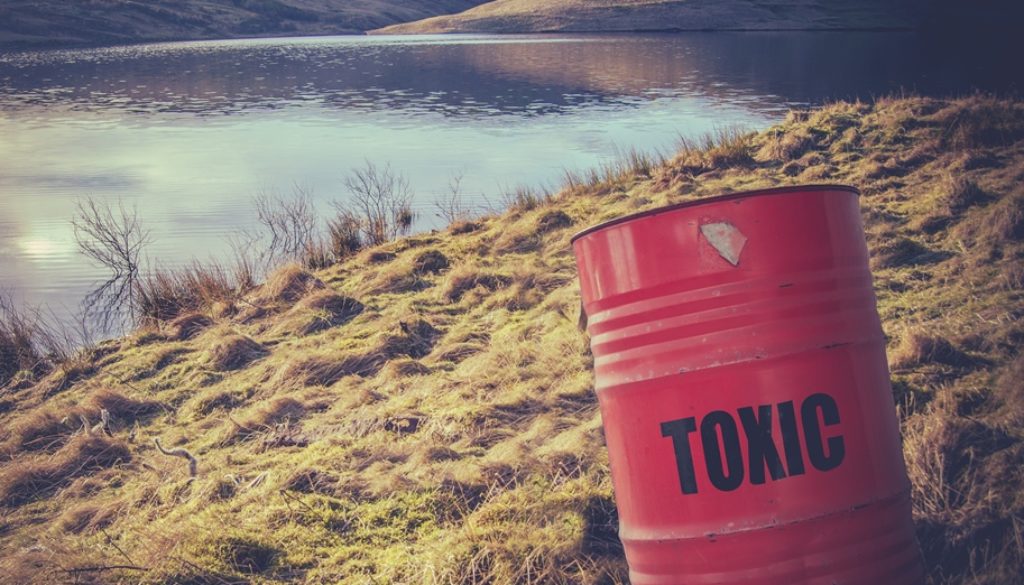Raw Sewage and Forever Chemicals: The Trump Administration’s Growing Waterworld Debacle
By Derrick Z. Jackson, Union of Concerned Scientists
The evidence is already spewing in about how foul our water will be under the Trump administration’s new water rules.
In late January, Environmental Protection Agency Administrator Andrew Wheeler officially removed protection for a huge percentage of the nation’s wetlands and streams, freeing toxic industries from having to fret about groundwater and waste ponds. In the same week that he made the announcement, news stories from across the nation made it clear that even without it, the Trump administration has already been deeply derelict in its duty to protect what should be a human right—safe water.
More raw sewage
On top of the new rules, the New York Times has also reported that the Trump EPA is relaxing requirements for cities to build proper sewage infrastructure, giving them an additional five to 10 years. Trump may not be a popular president in most major urban areas, but cities are eagerly renegotiating because they say such systems are expensive to build. (As an example, a three-tunnel system being built in Washington, D.C. to hold sewage and wastewater is costing out at $2.7 billion.)
Not even in the discussion, however, is federal aid to help cities build strong sewage systems instead of letting them off the hook and delaying essential upgrades. The Trump administration, according to numbers given by the Times, is renegotiating sewage consent decrees—the detailed plans submitted by cities to reduce or eliminate sewage overflow—at twice the pace of the Obama administration.
The result for the public is many more years of untold raw sewage being dumped into rivers and other bodies of water, especially during heavy rain—a problem that is getting worse as climate change brings more intense storms.
More than half of waterborne disease outbreaks in the US occur after heavy rains, as water purification infrastructure cannot keep up with the volume. Along with that, of course, are the unspeakable experiences of having raw sewage back up in the basements of family homes and untreated sewage, motor oil, pesticides and dog excrement spilling onto beaches and into streams, rivers, ponds, and lakes.
In 2016, the EPA under the Obama administration estimated that it would cost $271 billion over five years to maintain and upgrade the nation’s water infrastructure. Joel Beauvais, the EPA’s acting deputy assistant administrator for water said, “The only way to have clean and reliable water is to have infrastructure that is up to the task.”
Unfortunately, the Trump administration shows no interest in the task.
More forever chemicals
Also in January, the Environmental Working Group (EWG) released the results of drinking water tests from 44 water systems in 31 states. It found “forever chemical” and carcinogen PFAS (Per- and polyfluoroalkyl substances) in nearly all of them. In general, PFAS does not break down in the environment and bedevils a wide range of communities, from military bases where it is used as a fire retardant to environmental justice communities beset with heavy industry. PFAS compounds were once used regularly in common household utensils and fabric protectors such as Teflon and Scotchguard, but even when phased out, they persist in the environment.
There are no federal enforceable contaminant levels for PFAS. The US House of Representatives recently passed a bill to regulate it, but the Trump administration is threatening to veto the bill if it passes the Senate. This despite the fact that the EWG found the compounds in 34 locales where contamination has not been brought to the public’s attention by either the EPA or state officials. Based on its tests and new research from the University of Wisconsin that found PFAS in rainwater, EWG said that “PFAS is likely detectable in all major water supplies in the US.”
On top of the EWG’s testing, the South Carolina Department of Health and Environmental Control (DHEC) announced a week after Wheeler’s announcement that it has discovered PFAS in the drinking water of a mobile home park near Shaw Air Force Base. State officials said the source was likely the firefighting foam used on the base.
It’s just the latest example of the scores of military bases with major PFAS contamination. In 2018, the Union of Concerned Scientists mapped out 131 active and former military bases and found PFAS levels higher than risk levels recommended by the Agency for Toxic Substances and Disease Registry. The levels at the mobile home park near Shaw were high enough that DHEC water director Mike Marcus said in The State newspaper that residents “might want to consider not using that water for personal consumption.”
The fight against PFAS is yet another reason why it is foolish for Wheeler to remove half of the nation’s wetlands from protection in his new rules, because the benefits of wetlands can be far-reaching in unexpected ways. This fall, for example, researchers from Princeton University discovered a microbe from a New Jersey wetland that may have the potential to break down PFAS in between 100 days to a year. One of the researchers, Peter Jaffe, said, “For what is termed a ‘forever chemical,’ 100 days to one year is fine.”
Betraying the health of American families
What is not fine are more attacks on water protections from every angle imaginable, from winking and nodding at city sewage to declaring open season on wetlands when microbes from wetlands could declare open season on PFAS.
The Trump administration was already betraying the health of American families before Wheeler’s recent announcement of retrograde water rules. The rules just confirm that the worst is yet to come.

